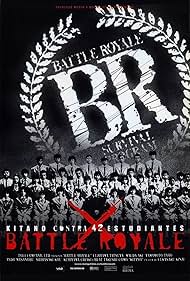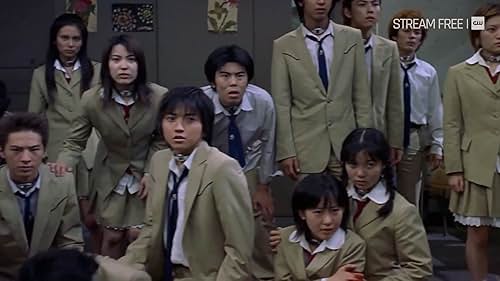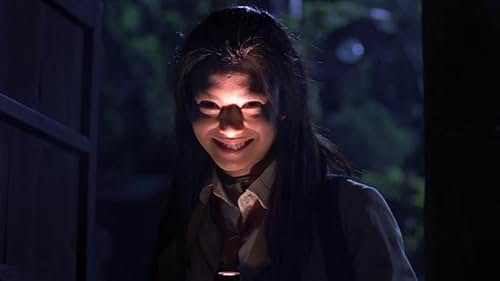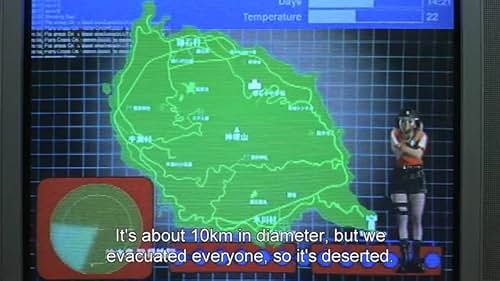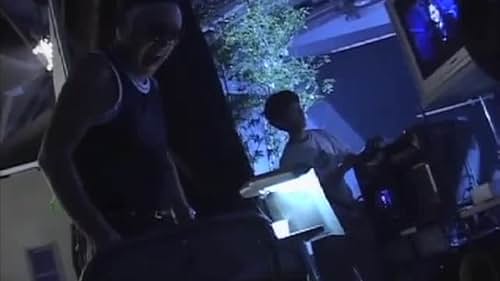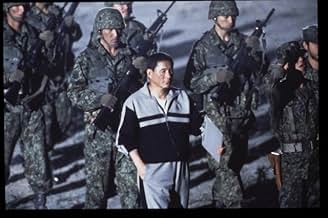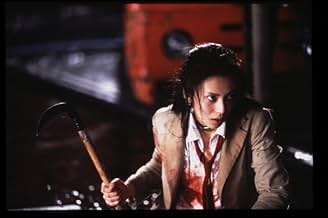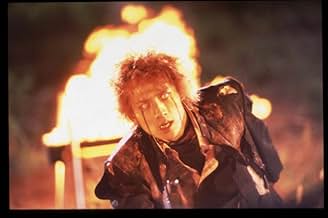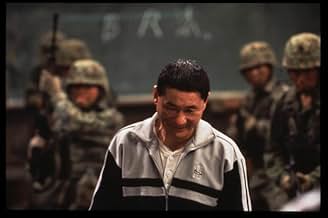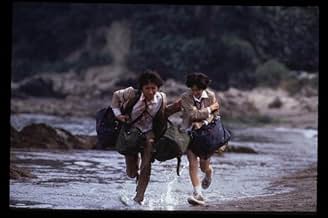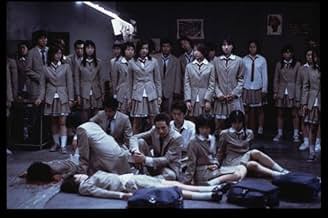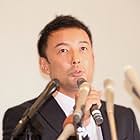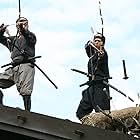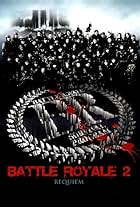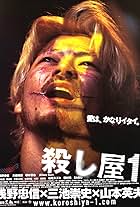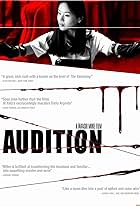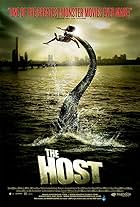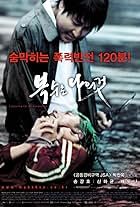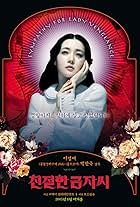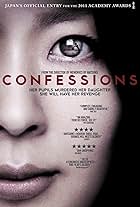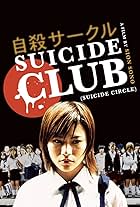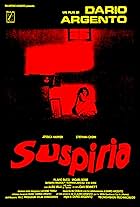Ambientato in un futuro prossimo, il governo giapponese emana la rivoluzionaria legge dal nome "Battle Royale" per la quale gli studenti di una classe delle superiori sono costretti ad uccid... Leggi tuttoAmbientato in un futuro prossimo, il governo giapponese emana la rivoluzionaria legge dal nome "Battle Royale" per la quale gli studenti di una classe delle superiori sono costretti ad uccidersi l'uno con l'altro.Ambientato in un futuro prossimo, il governo giapponese emana la rivoluzionaria legge dal nome "Battle Royale" per la quale gli studenti di una classe delle superiori sono costretti ad uccidersi l'uno con l'altro.
- Premi
- 7 vittorie e 8 candidature
Trama
Lo sapevi?
- QuizMany members of the Japanese Parliament tried to get the novel banned, but to no avail. When the film was released, they attempted to ban it also. Both efforts resulted in the novel and film becoming even more successful as people bought the book and went to the movie to see what the fuss was all about.
- BlooperGiven that the events in the beginning of the film shows the winning student from previous year with rather intense media coverage, the students in the competition depicted in the film should have been aware of the existence of the competition and what was at stake before it was explained to them.
- Citazioni
[Shougo has just finished bandaging Noriko's leg]
Shuya: You know a lot about medicine.
Shougo Kawada: Well, my father was a doctor.
[a few minutes later, Shougo serves Noriko and Shuya food]
Noriko Nakagawa: Wow! This is pretty good!
Shougo Kawada: It should be. My father was a chef.
[later, After escaping the island]
Shuya: You even know how to drive a boat?
Shougo Kawada: Hey, my father was a fisherman.
- Curiosità sui creditiAs the credits roll, a class picture is displayed, showing all of the students that have been killed in the Battle Royale, including the two transfer students.
- Versioni alternativeThe Special Version includes the following:
- Redone opening titles
- Redone sound effects
- Added CGI blood to make the shootouts more graphic Also, many shots were added, deleted, reedited, and extended for pacing and clarity purposes, including the following:
- A longer basketball sequence
- Added reaction shots of the kids in the classroom to Kitano's "Do you know this law" question, and after Kuninobu's death.
- A flashback shot of Mizuho and Inada and Kaori Minami to remind us of who they were when we see their bodies.
- Closer shots of Takiguchi and Hatagami's corpses
- An additional shot of Nanahara weeping at the top of the lighthouse
- Additional shots of postcards from Mimura's uncle
- Kitano shutting down power to the computers and ordering the soldiers to reboot after the Third Man attack
- A scene with Mitsuko as a 9-year-old coming home to find a pedophile in her house.
- An additional shot of Mimura triggering the explosives on the truck
- Requiems that show the real flashbacks, and we hear the dialog during Noriko's dream.
- ConnessioniFeatured in Japanorama: Episodio #1.2 (2002)
- Colonne sonoreShizuka na hibi no kaidan wo
(Stairway of Quiet Everyday Life)
Performed by Dragon Ash
Courtesy of Victor Entertainment, Inc.
Firstly to get it out of the way I will say that I loved this movie, although at no point did I feel comfortable while watching it. It had the power and emotional content, that while not necessarily apparent in the dialogue was visible on screen at all times.
I am truly glad that this film has come out of mainstream Japanese cinema. It would have only been made in the US by independent film-makers who would have basked in the glory of its controversy and felt oh-so-smug that they had created it, while shoving a moral in your face. While I actually have no problem with US Indie film I do feel that a Western background would have comprised on visceral content, and upped the content of cheap moral points.
For those who say the violence was "cartoon-style" and laughable must have been watching a different film. Whilst this film is heavy in black humour I can clearly say that the deaths are shocking in the extreme, and there is no relenting from the beginning to the end. Only occasionally does the camera pan away from the final deed. The only deaths that have a dark humour content to them, are those involving Kitano (Beat Takeshi) and the "lone" vigilante (those who have seen the film will know what I am talking about). Other sections, such as the "Training Video" are equally comedic, and absurd. Yet other deaths are shocking in the extreme, and show how the slightest suspicion can have disastrous consequences for groups that only have trust to keep them together, a truly shocking scene in the Lighthouse reinforces this.
The fact that this film employs Children as the main protagonists of the story is the key to the whole impact of the film. We have all seen films like The Running Man where adults fight adults for survival and it seems that much less shocking, albeit that film was handled in a completely different manner. Children have the innocence that makes the brutality of this film that much more shocking, adults in the same situation would have had the reaction from audiences of cheering at the screen as the hero dispatches yet another victim. This could never and would never have been the case with this film.
To another commentator who felt that this film sticks with you less than Scream, I simply fail to find this to be anywhere close to the truth. The deaths in Scream although bloody are nothing but pastiche of those films that Scream is mimicking, ultimately throwaway deaths that up in brutality in order to out-do the last one that have one or two psychotic perpetrators, who eventually get their comeuppance. In this film their are no victims and besides one exception there are no villains amongst the children. They simply HAVE to play the game or die.
Well I encourage all those who feel they can stomach it to go and see this film or find it available somewhere (as I believe it has been banned in the US). It is not truly a film denouncing the evils of Reality TV or showing us the future of that trend of Broadcasting, that is merely a plot device to place the children in this situation. The nature of the film lies in its deconstruction of Friendships, Trust and our views on Innocence. Go and see it not as a spectator of this BR spectacle but as one of the participants and remember what was important to you when you were at school, and whether any of those rivalries, hatreds and friendships would have been enough for you to decide who deserves to die and who deserves to live.
I più visti
Dettagli
- Data di uscita
- Paese di origine
- Siti ufficiali
- Lingue
- Celebre anche come
- Battle Royale: Special Edition
- Luoghi delle riprese
- Aziende produttrici
- Vedi altri crediti dell’azienda su IMDbPro
Botteghino
- Budget
- 4.500.000 USD (previsto)
- Lordo in tutto il mondo
- 1.343.717 USD
- Tempo di esecuzione1 ora 54 minuti
- Colore
- Mix di suoni
Contribuisci a questa pagina

